
La capitale del Belgio e dell’Unione Europea è una città cosmopolita a misura d’uomo strabordante di cose sorprendenti da scoprire.
Spesso sottovalutata rispetto alle altre grandi città del Vecchio Continente, Bruxelles, cuore della politica europea, è in realtà una città ricca di fascino, maestosa nelle sue antiche architetture, esuberante quando si parla di arte moderna, piacevole da percorrere a piedi e ricca di attrattive.
Sablon è un quartiere dell’area meridionale della città, una delle sue zone più suggestive e vivaci, frequentato soprattutto dagli appassionati di arredo e oggettistica. E’ qui infatti che hanno sede i negozi degli antiquari più prestigiosi, nonché numerose gallerie d’arte moderna e contemporanea, oltre alle pasticcerie storiche più famose della capitale.
Il quartiere si trovava fuori dalle mura cittadine ed era sede dell’élite, per entrare in città bisognava percorrere una strada sabbiosa (sablon), che poi ha dato il nome all’intera zona.
L’area iniziò ad espandersi nel XV secolo e molti nobili cominciarono a considerarla la loro casa.
Ben presto divenne la parte più ricca della città.
La piazza du Gran Sablon, circondata da magnifiche case signorili, è chiusa dalla bella facciata della chiesa di Notre Dame du Sablon, capolavoro dell’architettura gotico brabantina.
La chiesa, con le sue forme slanciate ed eleganti, colpisce per gli splendidi particolari decorativi architettonici.
L’edificio esisteva fin dal 1200 come cappella della gilda dei balestrieri, ma la costruzione in stile gotico cominciò nel XIV secolo e fu portata a termine nel XV secolo, con poche aggiunte posteriori.
L’edificio esisteva fin dal 1200 come cappella della gilda dei balestrieri, ma la costruzione in stile gotico cominciò nel XIV secolo e fu portata a termine nel XV secolo, con poche aggiunte posteriori.
Notre Dame segna, per così dire, il confine tra un ambiente pieno di vita qual è Place du Grand Sablon e l’atmosfera rarefatta di Place Petit Sablon dove sembra che il tempo si sia fermato.
Tra aristocratiche case immerse nel verde e nel silenzio, da non perdere il piccolo e delizioso giardino “all’Italiana” del 1890, chiuso da una cancellata in ferro battuto e il neoclassico Palazzo Egmont (dipendenza del Ministero degli Esteri) con il suo parco aperto al pubblico.
Oggi è possibile passeggiare per le vie acciottolate del quartiere e assimilare un po’ della sua storia.
Per il mio outfit del giorno una base total black resa più vivace da un gilet in pelliccia multicolor, mentre mi perdo tra le stradine animate che pullulano di bottegucce insolite di vario genere. Il luogo perfetto per apprezzare una delle atmosfere più pittoresche della città.
(Clicca qui per leggere di più sui i capi spalla più cool di questo inverno 2019).
(Clicca qui per vedere un mio diverso outfit dove indosso un gilet in pelliccia).
Just a short stroll from Brussels’ central sights, the Sablon district has long been one of the city’s most affluent and atmospheric neighborhoods.
It is the historic upper part of the city renowned for its elegant architecture and lively antique market, the area is crammed with terrace cafes, hip restaurants, contemporary art galleries, and fine chocolatiers.
This veritable mecca of antique dealers is surrounded by former mansion houses and is always bustling. At weekends the atmosphere is particularly lively with its thriving Book and Antiques market.
Formerly, the Sablon was a large single district situated above the Senne where the great families rubbed shoulders. In the eighteenth century, the Haussmann architecture of Rue de la Régence arrived to divide the Sablon into two: the Petit Sablon and the Grand Sablon.
At the top of the hill, we find the twin squares divided by the Church of Our Blessed Lady of the Sablon.
This veritable mecca of antique dealers is surrounded by former mansion houses and is always bustling. At weekends the atmosphere is particularly lively with its thriving Book and Antiques market.
Formerly, the Sablon was a large single district situated above the Senne where the great families rubbed shoulders. In the eighteenth century, the Haussmann architecture of Rue de la Régence arrived to divide the Sablon into two: the Petit Sablon and the Grand Sablon.
At the top of the hill, we find the twin squares divided by the Church of Our Blessed Lady of the Sablon.
The construction of Our Blessed Lady of the Sablon Church finished in the 15th century, but its story began much earlier, in the time when Henry I – Duke of Brabant – who recognized crossbowmen as a guild and granted them many privileges.
Along with that, he gave them the right to use a piece of land at Sablon, where the guild built a humble chapel consecrated to the Mother of God.
Our Blessed Lady of the Sablon Church replaced this chapel which became famous thanks to a miracle.
The church exterior is designed in late Brabantia Gothic style and was renovated at the turn of the 20th century, and it is one of the most beautiful churches in Belgium.
Opposite the Notre Dame Church, there is the Petit Sablon, a lovely neo-Renaissance style garden a baroque haven of peace that has a beauty all of its own thanks to its statues representing the various building trades.
Enter Egmont Park and prepare to feel like Alice in the Wonderland.
The church exterior is designed in late Brabantia Gothic style and was renovated at the turn of the 20th century, and it is one of the most beautiful churches in Belgium.
Opposite the Notre Dame Church, there is the Petit Sablon, a lovely neo-Renaissance style garden a baroque haven of peace that has a beauty all of its own thanks to its statues representing the various building trades.
Enter Egmont Park and prepare to feel like Alice in the Wonderland.
The Egmont Palace, a mansion built in the 16th century, is also situated in the park, and it feels like a fairytale world.
Today, it’s great to stroll around the Sablon.
Today, it’s great to stroll around the Sablon.
The capital’s jet set meets up there every day for a good meal or for a drink.
I’m wearing a total black base made more lively by a colorful fur vest, while I get lost in the animated streets that are full of unusual shops. The perfect place to enjoy one of the most picturesque atmospheres of the city.
(Click here to see the best fur coats to wear this winter).
(Click here to see another outfit where I was wearing a fur vest).
Location: the Petit Sablon and the Grand Sablon – Brussels – Belgium
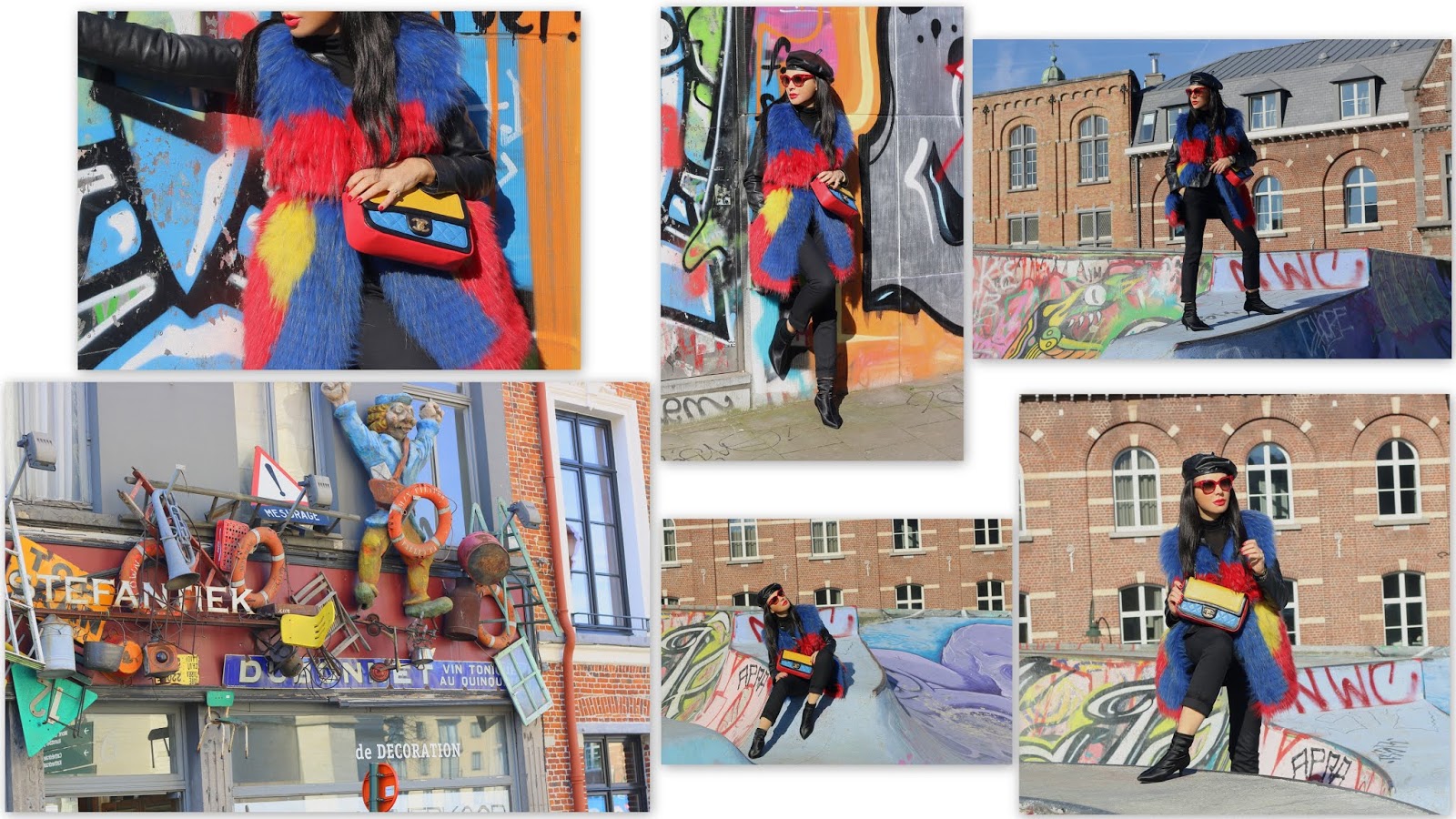
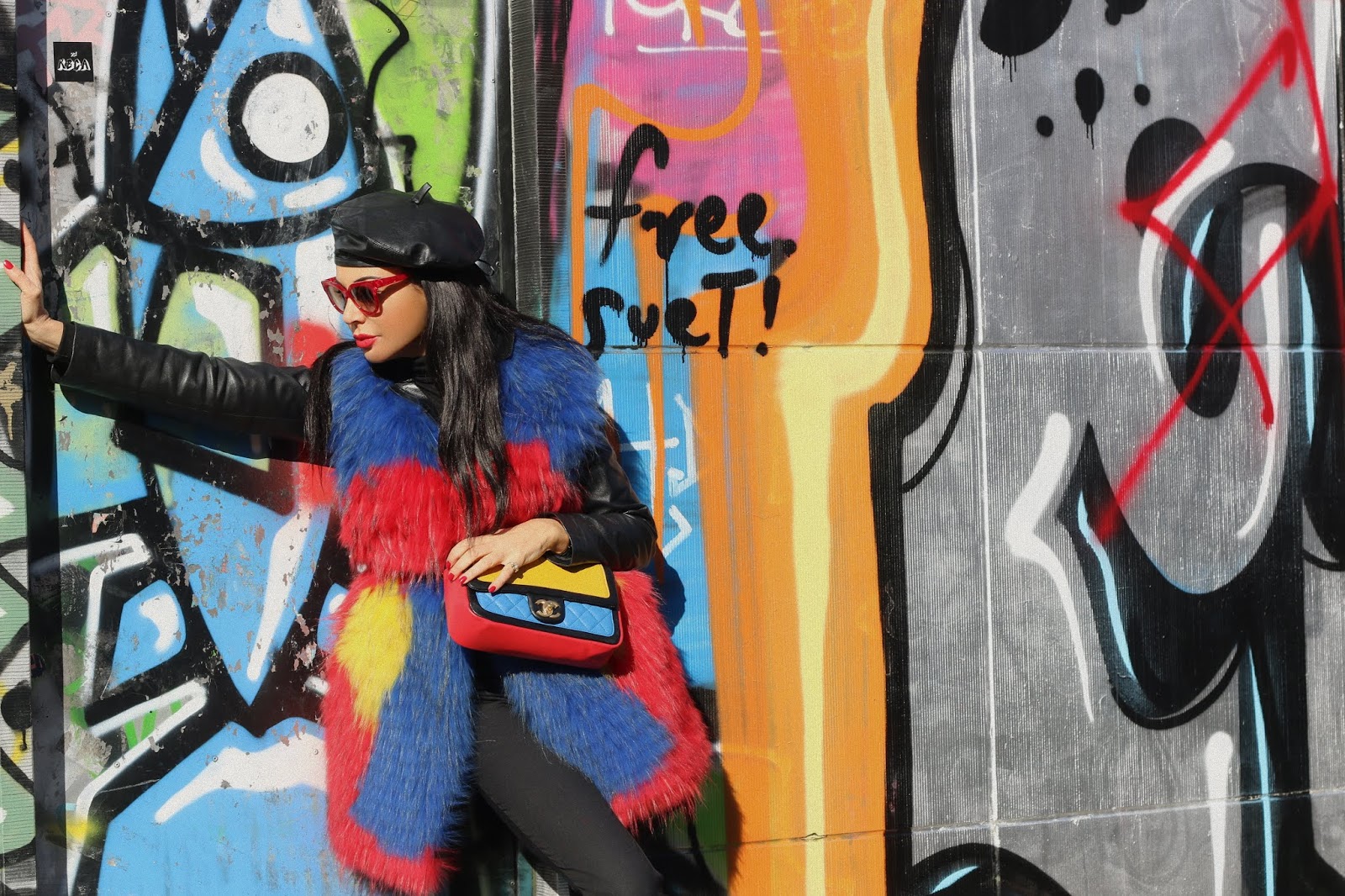
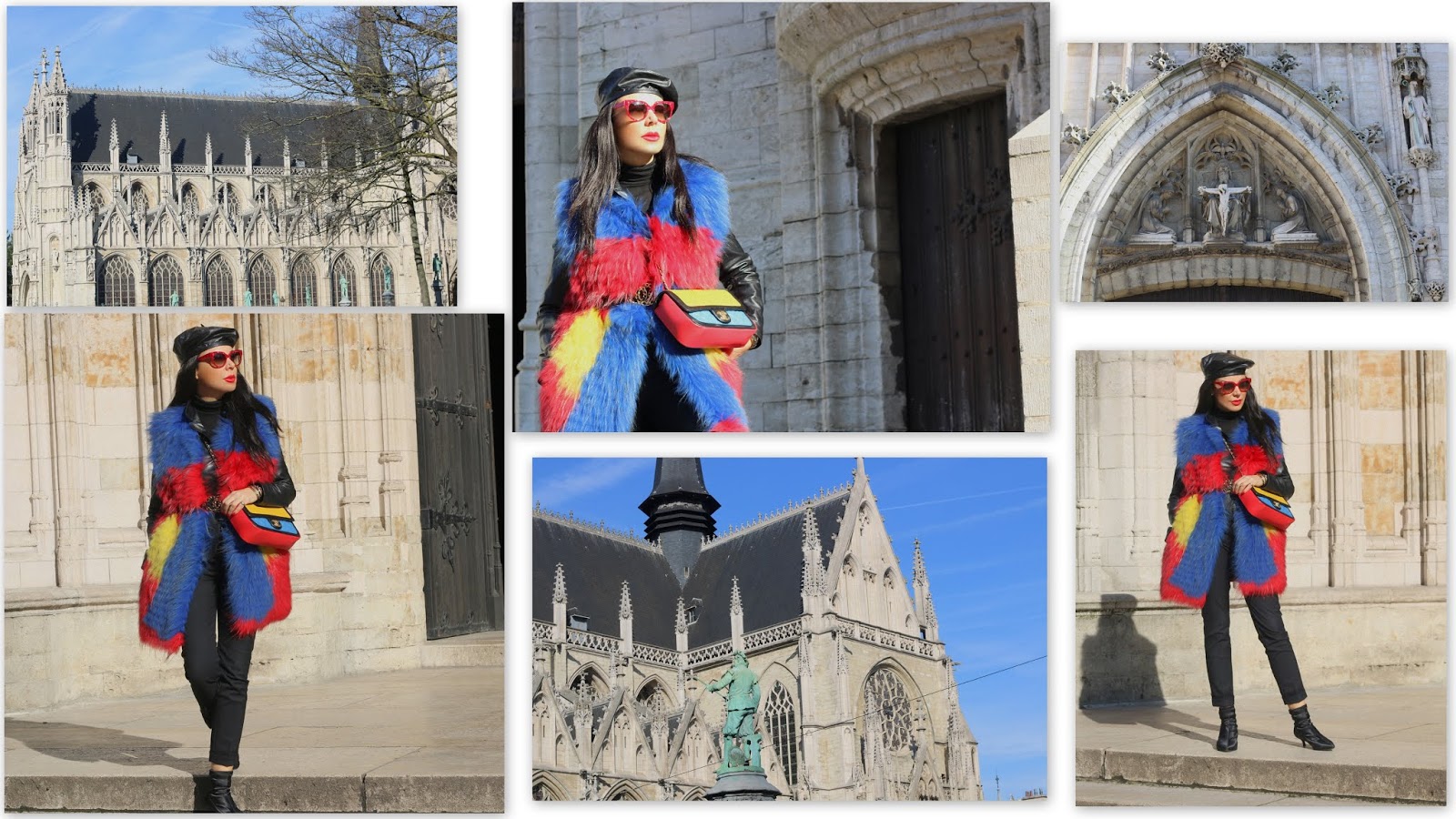

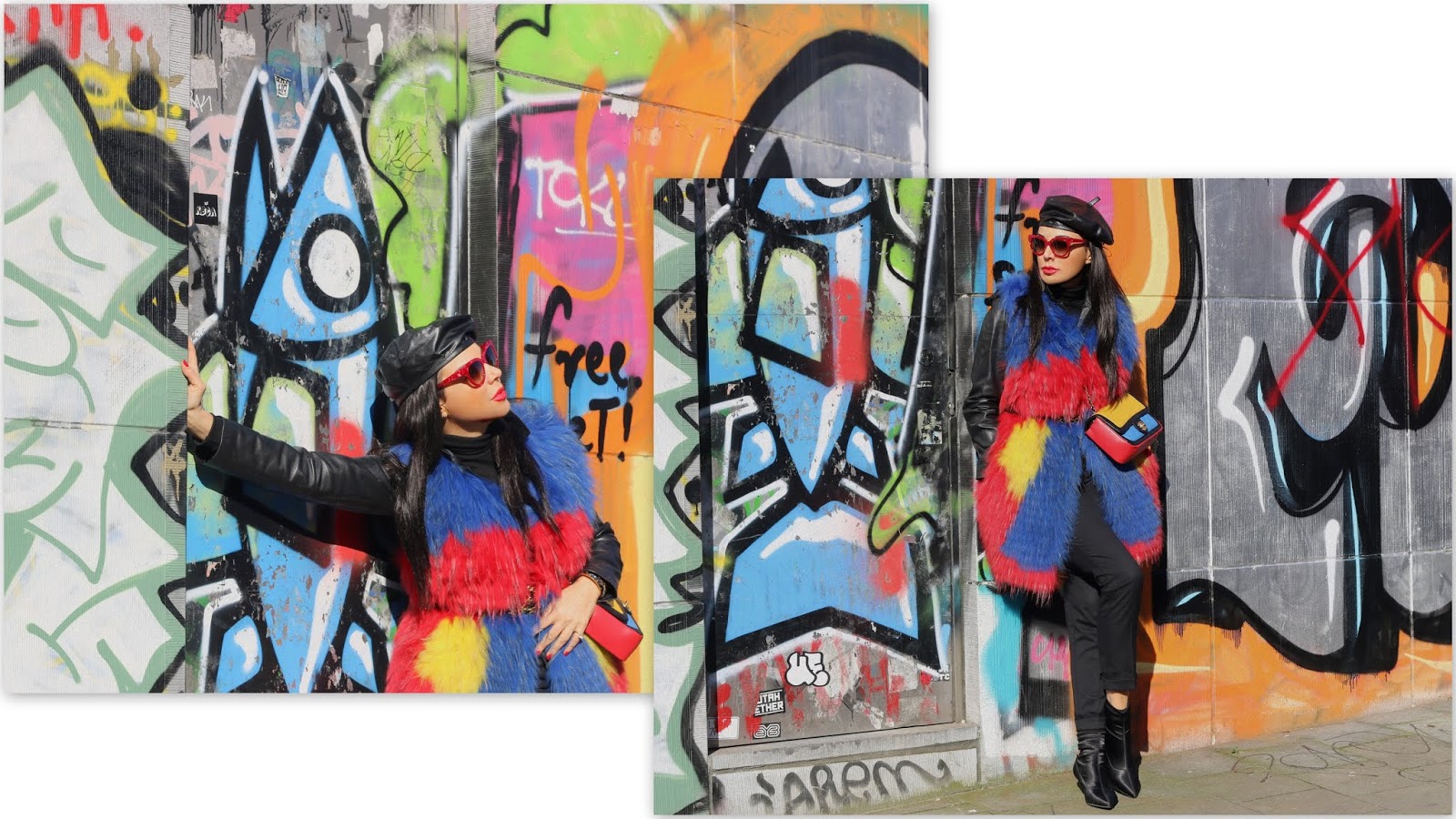

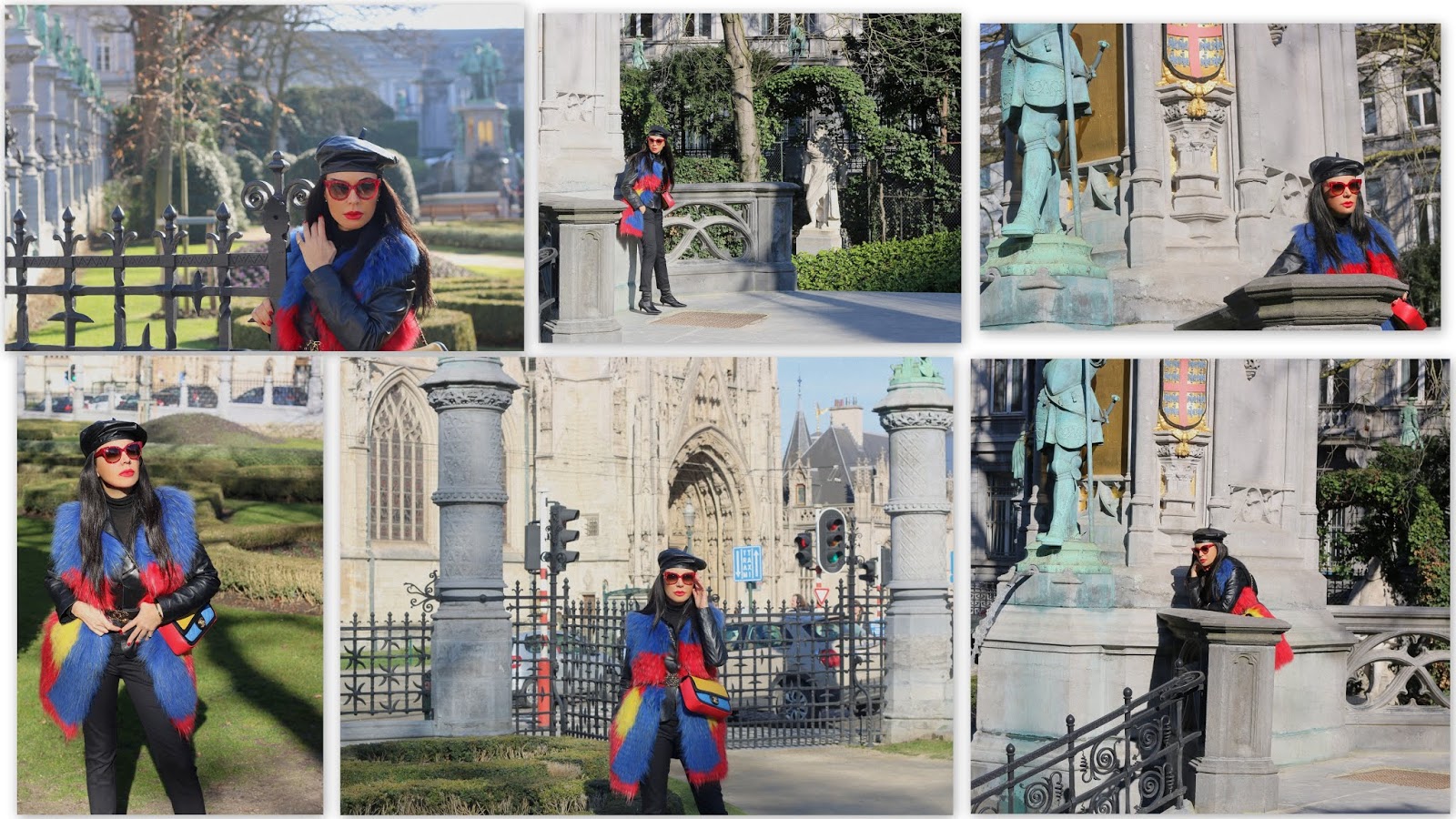

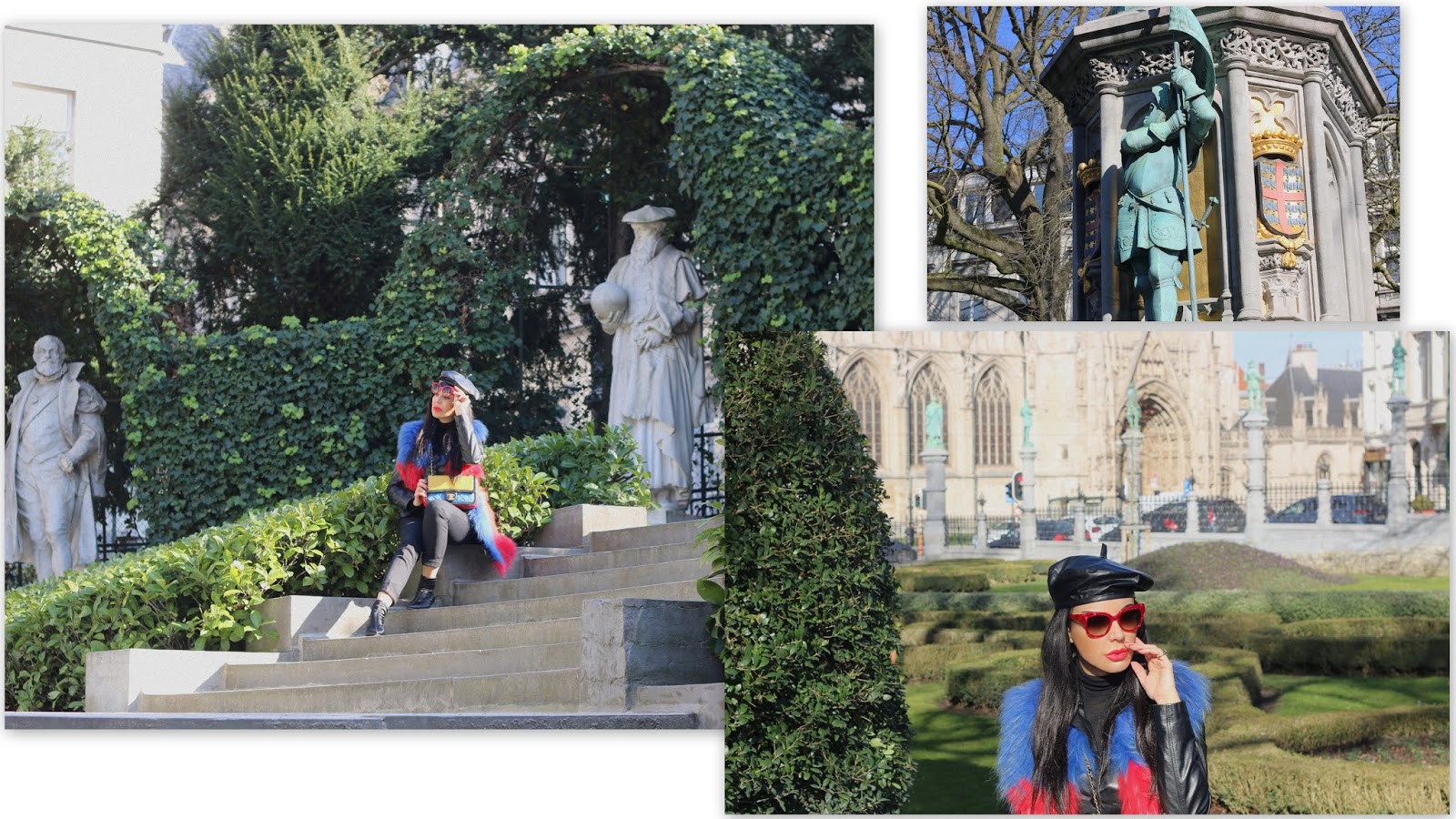
Photos: Oigres Elirab
I was wearing:
D’Arienzo leather blazer and fur vest
Patrizia Pepe pants
Chanel bag
Zara sock boots



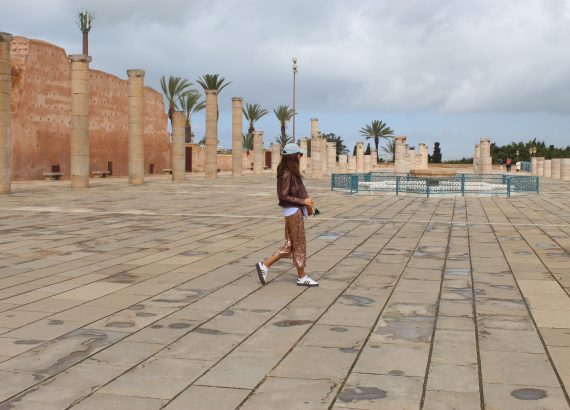
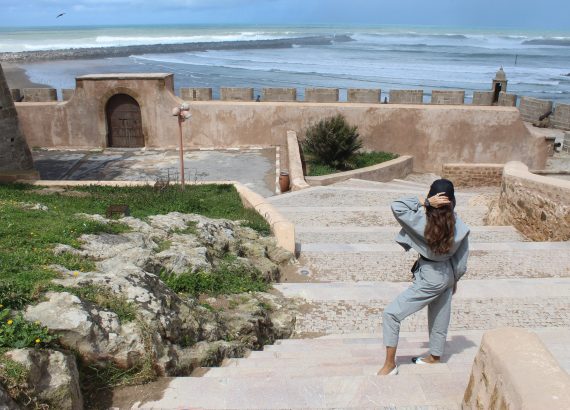
Questi scatti sono fantastici!
Love the photos.
Amazing look.
xx
https://theonethattravels.wordpress.com/
Love that colourful vest! Such a great piece.
the-creationofbeauty.blogspot.com
Your vibrant outfit totally suits this vibrant neighborhood Paola!
I love this whole outfit babe. You look lovely.
Your vest is amazing.
http://www.amysfashionblog.com/blog-home
Dear your vest is perfect! You look amazing! :*
Bellissimi colori di questo look. Che carina anche la borsa. Mi piace tanto anche questa location.
Sei sempre stupenda!!!!
https://modaodaradosti.blogspot.com/
Love the fur vest – super colourful and pretty.
http://www.pink-purpledots.blogspot.com
Love the colourful vest – so pretty !
http://www.pink-purpledots.blogspot.com
Great colourful
Kisses
Love the graffiti wall and your coat, so chic 🙂
– Marina
WHIMSICAL WILD THOUGHTS IN ZAANDAM &VOLENDAM
http://www.waitmarinawho.com/2019/03/whimsical-wild-thoughts-in-zaandam.html
This vest is simply amazing 🙂 You looks awesome!
Beautyandfashionfreaks
Love it.
Che bel look!!! Colorato , caldo, sbarazzino e cool!!
https://nettaredimiele.blogspot.com
Great and colourful pictures dear!
Have a nice day! xx
La ilusión de Nina – http://lailusiondenina.blogspot.com/
What a cool and colorful look! You´re amazing!
XO
Daria
https://www.dbkstylez.com
adoro la tua faux fur color block!
splendido look, mette allegria 🙂
Carmy new post
What a cool look blend well with graffiti Bellisima
You look super cute! Love the combination of outfit!
Preciosas fotos y lugar,tu look es divino!!
Besos;))
You look so chic and colorful. I love everything about this outfit Paola
xoxo
Mary | http://www.evolvewithmary.com
I think this is an informative post and it is very useful and knowledgeable. therefore, I would like to thank you for the efforts you have made in writing this article. If you are looking for antivirus security for your PC and any other digital devices than. Visit@: my sites :-
mcafee.com/activate |
office.com/setup |
McAfee.com/activate |
office.com/setup |
Your fur vest look so chic,
and the hat looks cool
perfect for a day of antique hunting.
Ann
https://roomsofinspiration.blogspot.com/
Thanks for stopping by, Ann!
xoxo
Loving the colors in this look, babe!
-Ashley
Le Stylo Rouge
Very colorful <3
Awesome post and you look so gorgeous too.
Thanks
Click here to get more traffic
Nice photos! Your outfit is so fun yet chic. I love it!
xo, Maria
https://www.miamiamine.com/
buon weekend!!!
https://modaodaradosti.blogspot.com/
Todo es estupendo! Feliz fin de semana y gracias por pasarte por mi blog! ♡♡♡
OMG! That bag is insanely beautiful!
xx
Eli
http://www.curly-style.com
everytime i went traveling, i always search for the hip and underground part of the city. this one surely looks like it!! very nice spots
VVEEKEND 101
Già quando ho visto il post di questo look su Instagram ho pensato: "ecco un look da forte impatto". Quel gilet è una vera opera d'arte e Bruxelles sembra essere un posto perfetto dove indossarlo. Complimenti!
the contrasts on your outfit totally match the scenery! i can only wonder how you do that! SO bold and chic! I am very much impressed!
Lyosha
Inside and Outside Blog and Instagram
le foto stupende!
It's like the best jacket ever!
Perfectly composed articles, thank you for the information.
Nahid | https://bestclicknow.com/best-fragrances-women-reviews-buy/
buon fine settimana 🙂
Carmy new post
Quant'è bello il gilet colorato… Super la borsa. Un bacione e buon fine settimana!
https://chicchedimamma.com/
Wow, so colorful 🙂 Great outfit as usual!
questo look è strepitoso tesoro!! adoro i colori!!
http://www.enricasciarretta.com
That coat looks amazing!Wonderful pictures:-)
https://www.lostindaydreams.com/
;D
Gostei muito do look!
Ótimo sábado!
Beijo! ^^
Hello,
Lovely !
Sarah, https://sarahmodeee.fr/
Stupenda location 😊 e la tua giacca mi piace molto, adoro i colori vivaci!
This is real power of colors!!! Wonderful , bold look my dear. I love your fur 🙂
Love the bag and the fur vest for their vibrant colors!
Perfect look Paola!
http://www.fashionradi.com
Wow, the city looks so artistic and colourful. Your Chanel multi colour bag is just perfect for this city.
Nice outfit. You put everything together so well.
Have a lovely week ahead! Xx
http://www.glitsxgrace.com/2019/03/18/networking-tips-for-introverts/